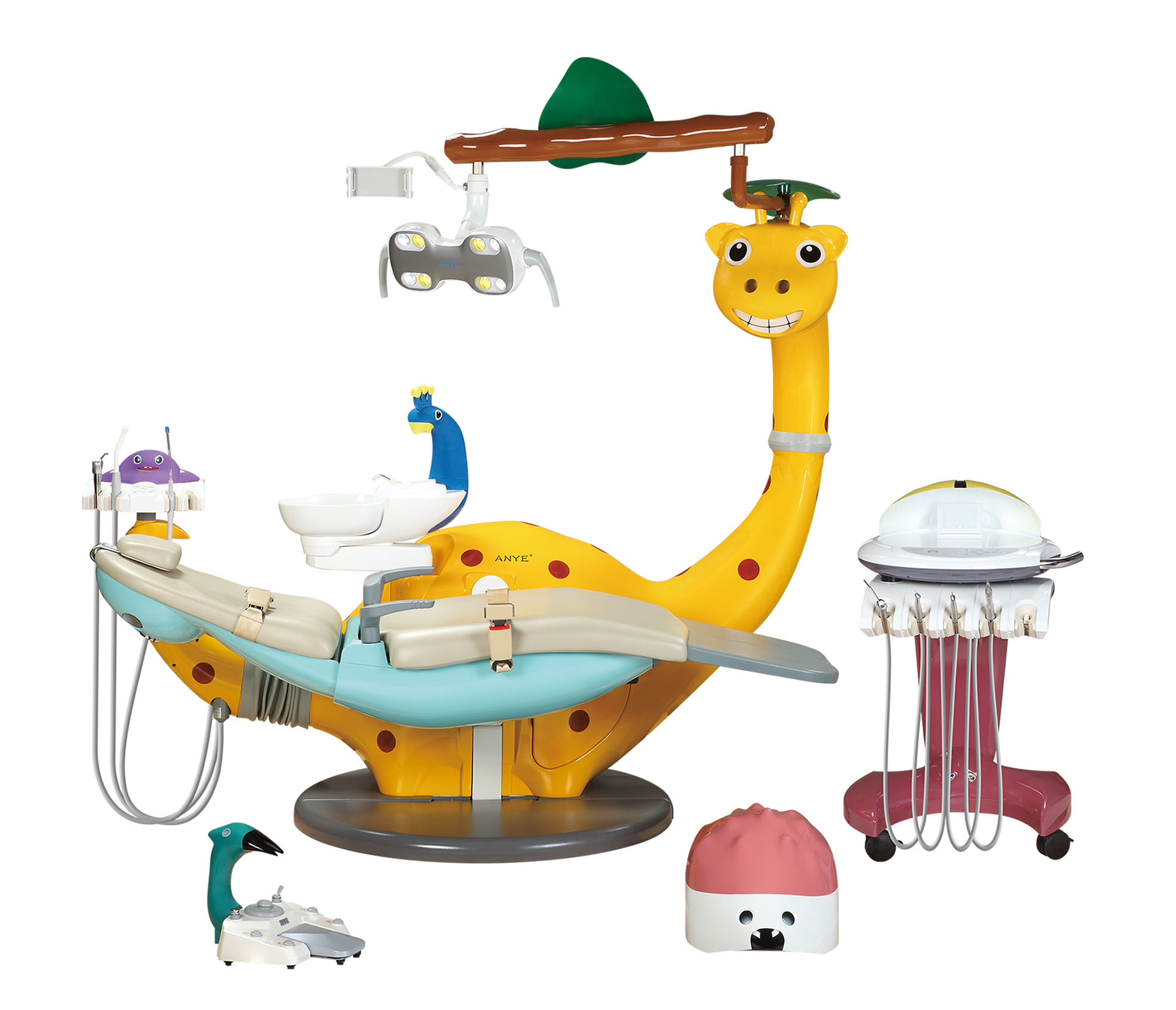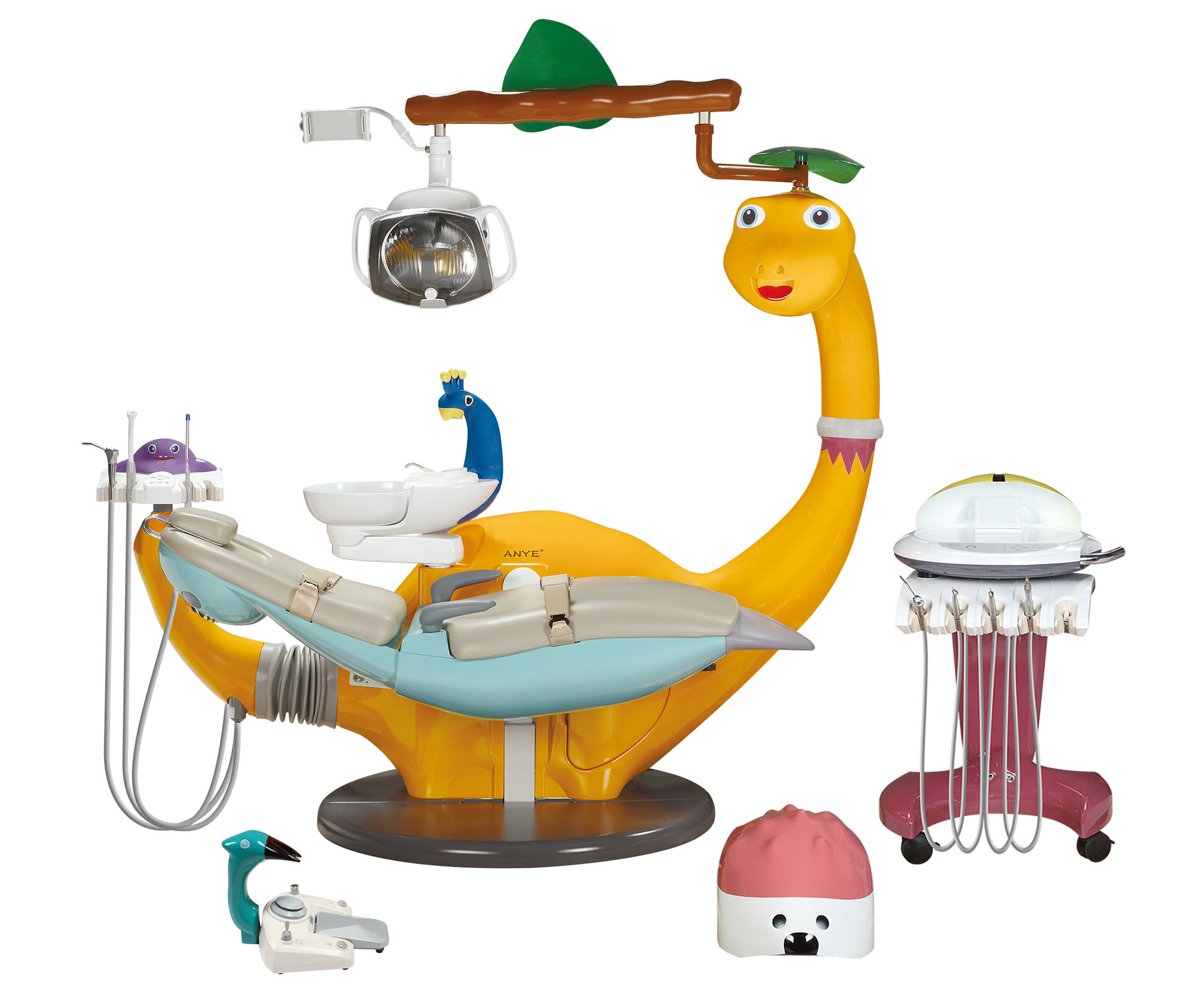How To Choose Children Dental Units?
Choosing the right children's dental units is a critical decision for pediatric dentists, as it significantly impacts the comfort, safety, and overall experience of young patients. Pediatric dentistry requires specialized equipment designed to meet the unique physiological and psychological needs of children. This article will explore the essential factors to consider when selecting children's dental units, ensuring that dental professionals can provide a safe, welcoming, and effective environment for their young patients.
Introduction to Pediatric Dentistry
Pediatric dentistry focuses on the dental care of children, from infancy through adolescence. It involves understanding child development, behavior management, and customized treatment approaches tailored to the needs of young patients. Central to this field is the adaptation of dental tools and technologies to suit pediatric patients. Insights from pediatric clinicians have contributed to advancements in dental equipment, improving its suitability for children.
Key Considerations in Choosing Children's Dental Units
1. Size and Adjustability
Children's dental units must be appropriately sized to accommodate children comfortably. Look for units that offer adjustable features, allowing for customization based on the child's height and size. Adjustability is critical for ensuring that children are positioned safely and comfortably during procedures. Adjustable kids dental units can be modified to fit children of different sizes, enhancing comfort and cooperation during treatment.
2. Safety Features
Safety is paramount in pediatric dentistry. Children's dental units should include anti-tipping features, adequate padding, and secure restraint systems to prevent accidents. Additionally, adjustable headrests and seatbelts are vital for maintaining stability during treatments. These safety features help prevent accidental falls or injuries, ensuring a secure environment for young patients.
3. Comfort and Ergonomics
Comfort is essential for young patients. Dental chairs should have soft padding and ergonomic designs to support children throughout their visit. Lumbar support and adjustable armrests can help children remain motionless during treatments. Ergonomic design ensures that children are positioned in a way that minimizes discomfort and stress.
4. Child-Friendly Design
The aesthetics of a dental unit can greatly influence a child's perception of the dental office. Vibrant colors, playful themes, and interactive features can create an inviting atmosphere. Consider units that incorporate multimedia options, such as TV screens or tablet holders, to distract and entertain children during treatments. These elements help reduce anxiety and foster a positive association with dental visits.
5. Hygiene and Maintenance
Hygiene is critical in a dental setting. Choose units made from materials that are easy to clean and sanitize. Removable and washable covers can also assist in preserving cleanliness and preventing cross-contamination. Antimicrobial kids dental units are designed with materials that inhibit bacterial growth, reducing the risk of infection.
6. Durability and Quality
Investing in high-quality dental units is essential for long-term use. Ensure that the units meet industry standards and certifications for safety and quality. This investment will pay off in the long run, as durable units reduce the need for frequent replacements and ensure consistent performance over time.
Types of Pediatric Dental Units
Understanding the various types of pediatric dental units can help dental professionals make informed decisions based on their specific needs. Here are some common types:
Adjustable Kids Dental Units: These units can be modified to fit children of different sizes, enhancing comfort and cooperation during treatment.
Antimicrobial Kids Dental Units: Designed with materials that inhibit bacterial growth, these units help minimize the risk of infection.
Attractive Kids Dental Chairs: These chairs feature fun and colorful designs that make the dental visit more enjoyable for children.
Comfortable Kids Dental Chairs: These chairs are designed with soft padding and ergonomic features to ensure the child's comfort during treatment.
Contemporary Kids Dental Chairs: These chairs feature modern designs and advanced features, such as integrated multimedia systems for entertainment during treatment.
Budget Considerations
When selecting pediatric dental units, it is essential to establish a budget. While it may be tempting to opt for the cheapest choice, consider the long-term benefits of investing in high-quality units that promote safety, comfort, and durability. A well-invested dental unit can enhance patient satisfaction and reduce operational costs over time.
Specialized Tools and Accessories
Pediatric dentistry often requires specialized tools and accessories designed to accommodate children's needs. These include smaller handpieces, gentle suction, and specialized lighting. These tools help ensure that treatments are both safe and effective for young patients.
Engagement and Entertainment
Colors, themes, and entertainment options play a crucial role in mitigating anxiety and fostering a welcoming atmosphere. From vibrant décor to child-oriented distractions like video screens or interactive games, these elements divert attention, calming nerves and promoting a positive association with dental visits.
Equipment Compatibility
Units should seamlessly integrate with specialized pediatric dental equipment. They should accommodate a variety of procedures, from routine cleanings to complex treatments, ensuring that dental professionals have access to the necessary tools without compromising on space or functionality.
Ease of Use
Intuitive design facilitates a smoother workflow for dental practitioners while minimizing stress for young patients. Child-friendly interfaces, easily accessible controls, and ergonomic tool placement contribute to a hassle-free experience, enabling practitioners to focus on delivering quality care.
Hygiene and Infection Control
Stringent infection control features are imperative to uphold a sterile and safe environment. Units should incorporate antimicrobial surfaces, efficient suction systems, and easily cleanable materials to minimize the risk of cross-contamination and infections.
Child-Specific Safety Protocols
Beyond general safety standards, pediatric units require additional protective measures tailored specifically for young patients. Safety locks, rounded edges, and non-toxic materials ensure a safe and secure environment, preventing potential accidents during treatments.
Durability and Maintenance
Investing in durable units can significantly impact the operational efficiency of a pediatric dental practice. Units crafted from robust, child-friendly materials withstand wear and tear, ensuring sustained functionality over time. Units designed for easy cleaning and maintenance not only contribute to their durability but also streamline daily operations.
Conclusion
In conclusion, selecting the right children dental units is a pivotal decision that impacts the quality of care provided to young patients. Thorough research, trials, and considerations regarding budget and long-term benefits are imperative in making an informed decision. Invest wisely in a dental unit that aligns with your practice's goals and values, ensuring optimal care for the young patients who walk through your doors.



Leave a comment